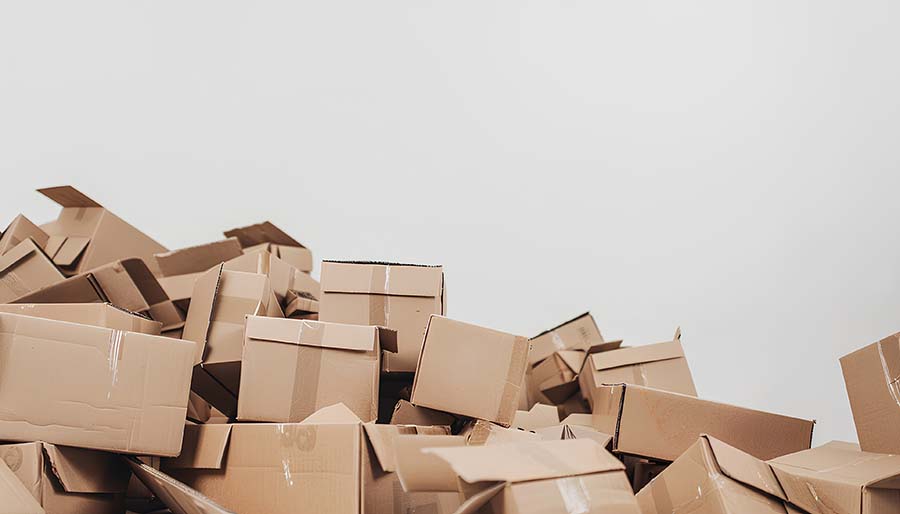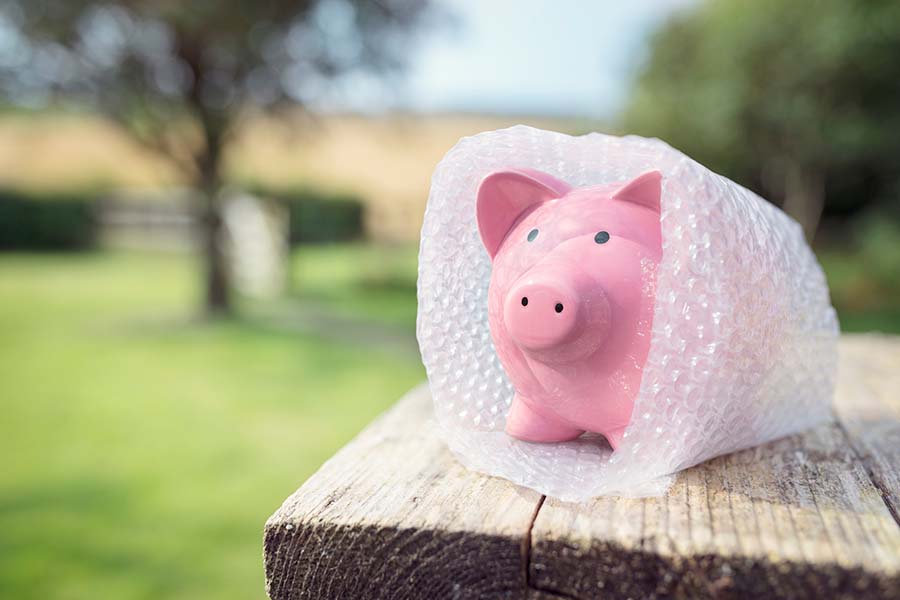Should HiFi Packaging Be Environmentally Friendly? Or Just Bulletproof?
We’ve all been there. You order a piece of HiFi kit—maybe a long-lusted-after valve amp or a pair of speakers you convinced yourself were an “investment”—and the box arrives. You open it with the anticipation of a child at Christmas (or I do, anyway) and immediately find yourself knee-deep in polystyrene, bubble wrap, zip-ties, more bubble wrap, plastic bags within plastic bags… and one suspicious-looking silica gel sachet that thinks it’s guarding the crown jewels. Oh and more often that not now, a pair of white gloves.
Packaging in the HiFi world has, for decades, walked a fine line between necessary protection and environmental absurdity. But as the world collectively wakes up to sustainability, the question becomes: can we really justify all this plastic and padding? And if not—how do we keep our precious gear safe?
Let’s get one thing straight: HiFi kit is not cheap. It’s often fragile. It’s usually heavy. And a fair portion of it is designed to appeal to people who get very upset if a brushed aluminium front panel arrives with so much as a smudge, never mind a ding. So yes, good packaging matters. More than that, it’s essential.
Some gear is shipped halfway across the world, across multiple time zones, bouncing along in lorries, planes, boats, and then finally plonked (gently, we hope) on a doorstep by someone who is not going to read the label that says “This Side Up.” Not that some couriers we’ve experienced seem to be able to read these warnings. I fully expect that the word “Fragile” translates in one specific hub that all packages ever shipped go through as “throw it around a bit and perhaps have a game of football with it.”
Packaging is your first and best defence. It keeps transformers from snapping PCBs in transit. It stops spikey cones from puncturing loudspeaker cones. It keeps your shiny, beautiful monoblocs from arriving looking like they’ve gone three rounds with a disgruntled baggage handler. So no, the answer is not to do away with packing entirely.
But—and it’s a big but – must it all be made from virgin plastic, polystyrene, and petrochemical by-products? David Attenborough’s Ocean series starts very soon, and a good deal of that program is likely to be about plastic waste in the oceans.
Thankfully, we’re not in 1992 anymore, and manufacturers do have choices beyond a sea of polystyrene peanuts – I hate the peanuts (is that the right term, even), but the cats seem to love them…to eat, and so they have to be packed away quick-smart before Clio and Ali get hold of them. Some brands have started moving toward fully recyclable packaging, using cardboard inserts and cellulose-based protective wrappings that can go straight into the recycling bin or compost heap. I’ve even seen popcorn (yes, the stuff you get at cinemas) being used as packaging.
Other companies have taken the route of reusable packaging—simple, elegant cloth bags instead of layers of plastic. Some offer QR codes printed on the box instead of extra instruction booklets, saving paper and giving you a sleek digital manual instead.
And let’s not forget the rise of moulded pulp packaging—yes, it looks like an oversized egg carton, but it does the job, it’s biodegradable, and it doesn’t come with that strange static cling you get from Styrofoam. Admittedly, it might not feel as premium, but isn’t the real luxury knowing you haven’t helped clog up another ocean?
Then, at the other end of the spectrum, we have the flight case crowd. You know the ones. They open the box and out comes a precision-cut aluminium case with latches, handles, protective foam, and a sense that something serious is about to happen.
Some brands ship high-end products in bespoke flight cases—practical for trade shows, safe for long-haul shipping, and pretty cool to boot. In some cases, these flight cases are designed to be used afterwards. Display your DAC, store your cables, or use it as a stylish-if-impractical lunchbox. I very much like the flight-case route for shipping, but then if you don’t display your kit on said flight case, where do you store it?
There’s something very appealing about packaging that doesn’t go in the bin. Yes, it’s resource-heavy to make, but if it becomes part of your HiFi room—maybe storing interconnects or LP cleaning kits—then it has a second life. Unlike that polythene bag you pulled off a power cable and immediately binned.
There’s also the question of what packaging says about a brand. Some high-end manufacturers want their unboxing experience to feel like you’re opening a Swiss watch. Layers of carefully folded tissue paper. Embossed boxes within boxes. Foam cradles that fit like a bespoke suit. I love this approach almost as much as I love the flight case approach – it’s that Christmas morning thing we bang on about all the time. That feeling that your hard-earned cash has brought you delight from the moment it arrives on your doorstep.
It’s beautiful. But is it necessary? In an age where even the most mainstream consumers are questioning packaging excess, audiophiles are in a good position to demand better.
A premium product can feel luxurious and still be sustainably packaged. It just takes a little more effort in the design phase. Some already do this. Others? Still caught in the clingfilm dark ages.
So where’s the sweet spot?
Recyclable packaging: Good. Think paper, cardboard, biodegradable foam, and minimal plastic. Looks a bit less swanky, but gets the job done without killing too many turtles.
Reusable packaging: Better. If it can serve another purpose—like storage, display, or transport—it justifies its environmental footprint.
Ridiculous packaging: Bad. If it requires a saw, a skip, or a minor breakdown to get into, it’s probably overkill.
A flight case you can use again is arguably more sustainable than five layers of single-use wrap—even if it looks like it’s been nicked from a touring band’s van.
Perhaps it’s time we start thinking about packaging when we buy our gear, not just specs and sonic signatures. Ask your dealer what the manufacturer’s sustainability practices are. Consider praising companies that clearly make the effort on social media – perhaps mention them in your comments to this article on social media.
You can’t see the packaging once it’s in your rack anyway. Unless it’s one of those lovely aluminium flight cases… in which case, put it on a shelf, add a lava lamp, and call it modern art.
In the end, packaging in HiFi is about balance. It needs to protect, but it should also feel good to open. And yes, in 2025, it really should be kind to the planet.
The good news is that with smarter materials, better design, and growing awareness, we don’t have to choose between luxury and sustainability.
Hifi Pig snoofled out an interesting site recently. The name is HiFi Hunter and its a great search engine to help you find kit that is being sold as second…
THE NEW HIFI PIG MAGAZINE IS OUT AND FREE TO DOWNLOAD NOW.... There's 340 pages packed with HiFi Reviews, Industry Interviews and much more. Click here to download your copy…
Unauthorized use and/or duplication of this material (in part or in full) without express and written permission from this website’s author
and/or owner is strictly prohibited. Links may be used, provided that full and clear credit is given to Hifi Pig and Big Pig Media with appropriate and specific direction (link) to the original content.
Hifi Pig is part of the Big Pig Media LLP group
of companies.
Packaging For HiFi – To Serve And To Protect
Should HiFi Packaging Be Environmentally Friendly? Or Just Bulletproof?
We’ve all been there. You order a piece of HiFi kit—maybe a long-lusted-after valve amp or a pair of speakers you convinced yourself were an “investment”—and the box arrives. You open it with the anticipation of a child at Christmas (or I do, anyway) and immediately find yourself knee-deep in polystyrene, bubble wrap, zip-ties, more bubble wrap, plastic bags within plastic bags… and one suspicious-looking silica gel sachet that thinks it’s guarding the crown jewels. Oh and more often that not now, a pair of white gloves.
Packaging in the HiFi world has, for decades, walked a fine line between necessary protection and environmental absurdity. But as the world collectively wakes up to sustainability, the question becomes: can we really justify all this plastic and padding? And if not—how do we keep our precious gear safe?
Let’s get one thing straight: HiFi kit is not cheap. It’s often fragile. It’s usually heavy. And a fair portion of it is designed to appeal to people who get very upset if a brushed aluminium front panel arrives with so much as a smudge, never mind a ding. So yes, good packaging matters. More than that, it’s essential.
Some gear is shipped halfway across the world, across multiple time zones, bouncing along in lorries, planes, boats, and then finally plonked (gently, we hope) on a doorstep by someone who is not going to read the label that says “This Side Up.” Not that some couriers we’ve experienced seem to be able to read these warnings. I fully expect that the word “Fragile” translates in one specific hub that all packages ever shipped go through as “throw it around a bit and perhaps have a game of football with it.”
Packaging is your first and best defence. It keeps transformers from snapping PCBs in transit. It stops spikey cones from puncturing loudspeaker cones. It keeps your shiny, beautiful monoblocs from arriving looking like they’ve gone three rounds with a disgruntled baggage handler. So no, the answer is not to do away with packing entirely.
But—and it’s a big but – must it all be made from virgin plastic, polystyrene, and petrochemical by-products? David Attenborough’s Ocean series starts very soon, and a good deal of that program is likely to be about plastic waste in the oceans.
Thankfully, we’re not in 1992 anymore, and manufacturers do have choices beyond a sea of polystyrene peanuts – I hate the peanuts (is that the right term, even), but the cats seem to love them…to eat, and so they have to be packed away quick-smart before Clio and Ali get hold of them. Some brands have started moving toward fully recyclable packaging, using cardboard inserts and cellulose-based protective wrappings that can go straight into the recycling bin or compost heap. I’ve even seen popcorn (yes, the stuff you get at cinemas) being used as packaging.
Other companies have taken the route of reusable packaging—simple, elegant cloth bags instead of layers of plastic. Some offer QR codes printed on the box instead of extra instruction booklets, saving paper and giving you a sleek digital manual instead.
And let’s not forget the rise of moulded pulp packaging—yes, it looks like an oversized egg carton, but it does the job, it’s biodegradable, and it doesn’t come with that strange static cling you get from Styrofoam. Admittedly, it might not feel as premium, but isn’t the real luxury knowing you haven’t helped clog up another ocean?
Then, at the other end of the spectrum, we have the flight case crowd. You know the ones. They open the box and out comes a precision-cut aluminium case with latches, handles, protective foam, and a sense that something serious is about to happen.
Some brands ship high-end products in bespoke flight cases—practical for trade shows, safe for long-haul shipping, and pretty cool to boot. In some cases, these flight cases are designed to be used afterwards. Display your DAC, store your cables, or use it as a stylish-if-impractical lunchbox. I very much like the flight-case route for shipping, but then if you don’t display your kit on said flight case, where do you store it?
There’s something very appealing about packaging that doesn’t go in the bin. Yes, it’s resource-heavy to make, but if it becomes part of your HiFi room—maybe storing interconnects or LP cleaning kits—then it has a second life. Unlike that polythene bag you pulled off a power cable and immediately binned.
There’s also the question of what packaging says about a brand. Some high-end manufacturers want their unboxing experience to feel like you’re opening a Swiss watch. Layers of carefully folded tissue paper. Embossed boxes within boxes. Foam cradles that fit like a bespoke suit. I love this approach almost as much as I love the flight case approach – it’s that Christmas morning thing we bang on about all the time. That feeling that your hard-earned cash has brought you delight from the moment it arrives on your doorstep.
It’s beautiful. But is it necessary? In an age where even the most mainstream consumers are questioning packaging excess, audiophiles are in a good position to demand better.
A premium product can feel luxurious and still be sustainably packaged. It just takes a little more effort in the design phase. Some already do this. Others? Still caught in the clingfilm dark ages.
So where’s the sweet spot?
Recyclable packaging: Good. Think paper, cardboard, biodegradable foam, and minimal plastic. Looks a bit less swanky, but gets the job done without killing too many turtles.
Reusable packaging: Better. If it can serve another purpose—like storage, display, or transport—it justifies its environmental footprint.
Ridiculous packaging: Bad. If it requires a saw, a skip, or a minor breakdown to get into, it’s probably overkill.
A flight case you can use again is arguably more sustainable than five layers of single-use wrap—even if it looks like it’s been nicked from a touring band’s van.
Perhaps it’s time we start thinking about packaging when we buy our gear, not just specs and sonic signatures. Ask your dealer what the manufacturer’s sustainability practices are. Consider praising companies that clearly make the effort on social media – perhaps mention them in your comments to this article on social media.
You can’t see the packaging once it’s in your rack anyway. Unless it’s one of those lovely aluminium flight cases… in which case, put it on a shelf, add a lava lamp, and call it modern art.
In the end, packaging in HiFi is about balance. It needs to protect, but it should also feel good to open. And yes, in 2025, it really should be kind to the planet.
The good news is that with smarter materials, better design, and growing awareness, we don’t have to choose between luxury and sustainability.
Stuart Smith
What do you think about the packaging of HiFi? Join the discussion.
Read More Posts Like This
WEEKLY HiFi NEWS ROUND UP https://youtu.be/CtPc_cUTAPs
Hifi Pig snoofled out an interesting site recently. The name is HiFi Hunter and its a great search engine to help you find kit that is being sold as second…
THE NEW HIFI PIG MAGAZINE IS OUT AND FREE TO DOWNLOAD NOW.... There's 340 pages packed with HiFi Reviews, Industry Interviews and much more. Click here to download your copy…